Miniatures of the Tudor Age: For Your Eyes Only!
Tudor Miniatures are incredibly intense and personal objects, painted by some of the most talented artists of the age. In today’s blog, we are going to be exploring this exquisite art form, as I go in conversation with expert Emma Rutherford of The Philip Mould Galleries. Learn about the diplomatic and deeply romantic use of these tiny, but exquisite objects; the techniques used to create them and the refined world of the Tudor miniaturist. How did one miniature change the course of English history and another reveals the racy side of the Elizabethan court? Let’s find out!
Note: This blog has been adapted from an interview with Emma, recorded for the July 2020 episode of The Tudor Travel Show. If you wish to listen to the conversation, you may follow this link.
The Delicate World of Tudor Miniatures
Sarah:
Hello, Emma, and welcome to The Tudor Travel Show!
Emma:
Thank you so much for having me. It’s a pleasure to be here.
Sarah:
Well, I’m sure it’s going to be my pleasure because we’re talking about a subject today that I know very little about and that’s ‘miniatures’. Of course, I’ve admired them, as many of my readers no doubt have too, but I know so little about them.
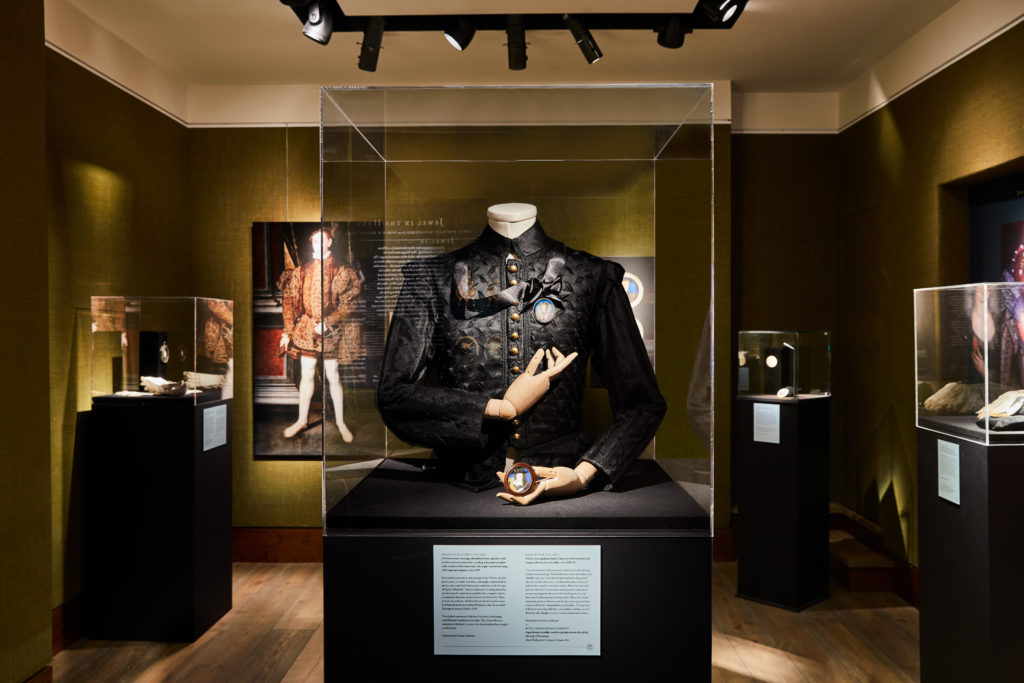
Emma:
That’s right, yes, I think miniatures are always thought of as a bit of a side-line in history and art history, but actually for the Tudor period, they’re so central and so exciting. I’m really thrilled to be able to talk about them.
Sarah:
My first question for you would be, where did your interest in miniatures come from?
Emma:
Well, it actually started very early. I was a very boring child and got into my history by the age of 10 or 11. My parents very kindly took me to Hever Castle, because I was particularly interested in Henry VIII and, of course, Anne Boleyn. When we went to Hever, they had on loan a portrait miniature which was supposed to be of Anne Boleyn.
I can’t really remember very much about it but the thing that really struck me was, ‘Oh my goodness, Henry VIII held this object; he actually held it and touched it!’ I think for me, as a child, I just found that incredibly exciting.
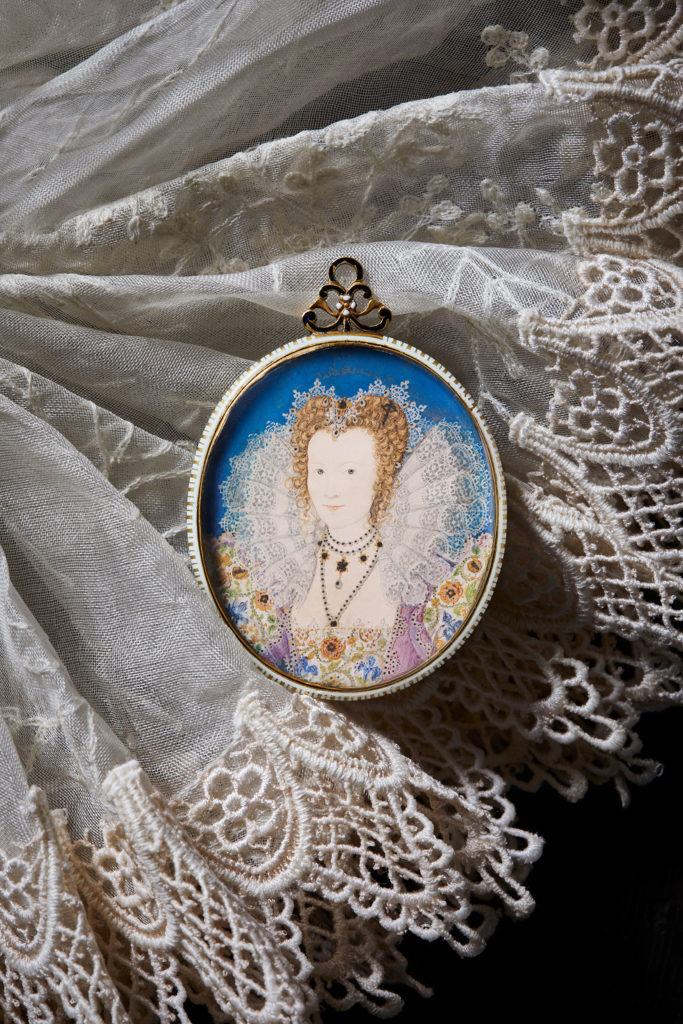
Then, I probably didn’t come across portrait miniatures until I worked at the Victoria and Albert Museum while doing my Masters. I was assigned to the portrait miniature part of the art section of the V&A. They were preparing for an exhibition, which was heading off to Japan and which included the amazing portrait miniature by Hilliard of ‘The Young Man Among Roses’. Again, I just got that sense of excitement, looking at them and being able to study them in detail. So, I think probably that was what properly secured my interest in them – and that was 25 years ago now!
Sarah:
I can feel the emotion that you experience when you connect to miniatures. I suppose that is what you’re saying that people at the time did as well; they were very personal objects.
Emma:
Absolutely! Just by dint of their size, you can’t have a great crowd of people admiring a painting in miniature in the same way that you can an oil painting. So, they have to be hand-held; that’s the only way you can really engage with them. And I think the really exciting thing, particularly with the early ones, is that they’re only meant to be seen by three pairs of eyes, initially. So, you have the person who’s commissioned the miniature; the person who the miniature is of, and the artist. That’s the initial circle of people who were looking at this object. So they’re just so intensely romantic and private.
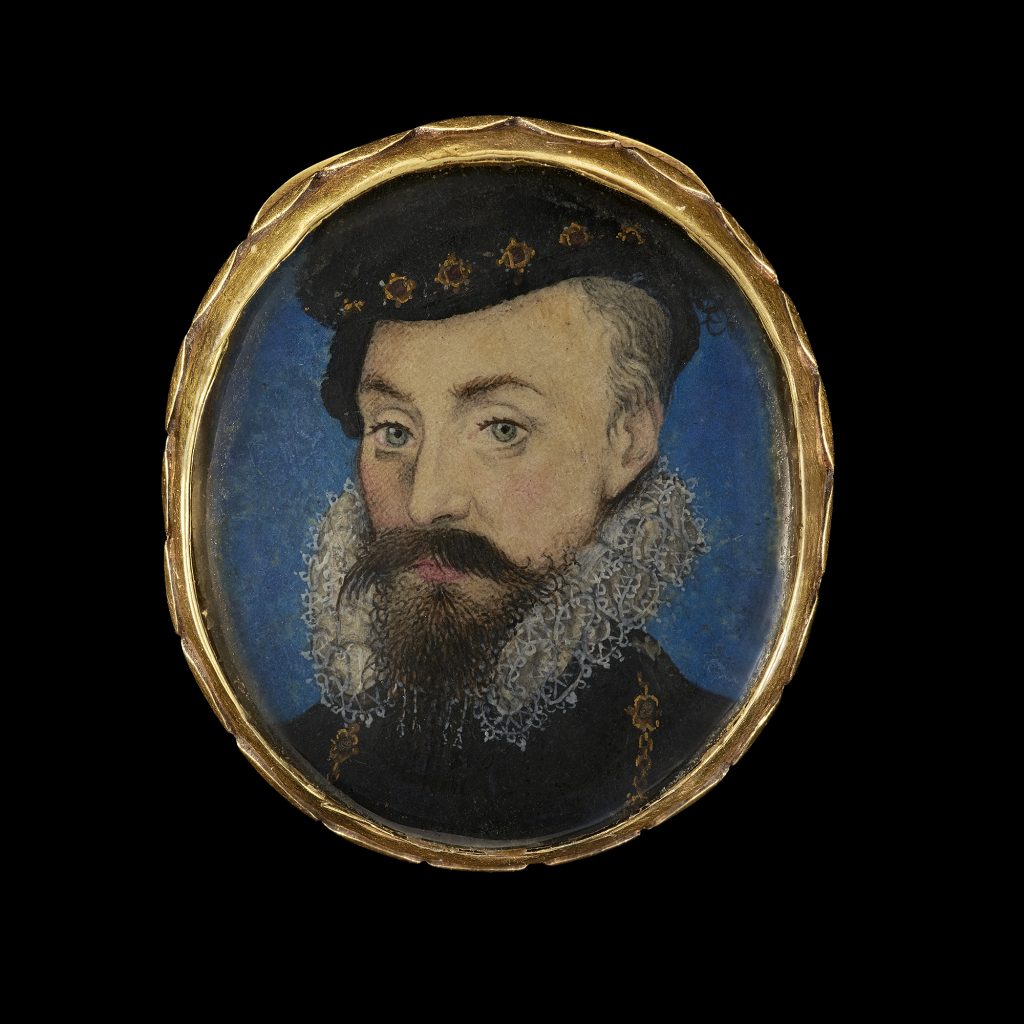
Sarah:
I never thought about it like that – just three pairs of eyes; that’s a wonderful way to look at it! So, maybe now you could tell us about the origins of miniatures? What’s the story of their evolution?
Emma:
Yes, they have a very specific evolution. Lots of people assume that they’re just reduced oil paintings, but they have their own history, which is different from that of oil paintings. The origins of miniatures lie in the illuminated manuscript. Initially, they weren’t called portrait miniatures; they were called ‘limnings’ and the people who painted them were called ‘limners’. This word comes from the word ‘illuminata’, which is obviously made use of in the phrase ‘illuminated manuscripts’. It’s a wonderful word – it means to give light.
When you open one of those books of hours and the colours sing out at you, you can see why this word is a perfect description. Now, the word ‘miniature’ starts to come in a little bit later. It actually comes from the Latin word ‘miniari’, which means to colour with red lead. Red paint was mainly used for the capital letters, where occasionally a portrait was included. So, for example, you might see the ‘H’ of Henry in a manuscript – and there might well be a portrait of Henry there.
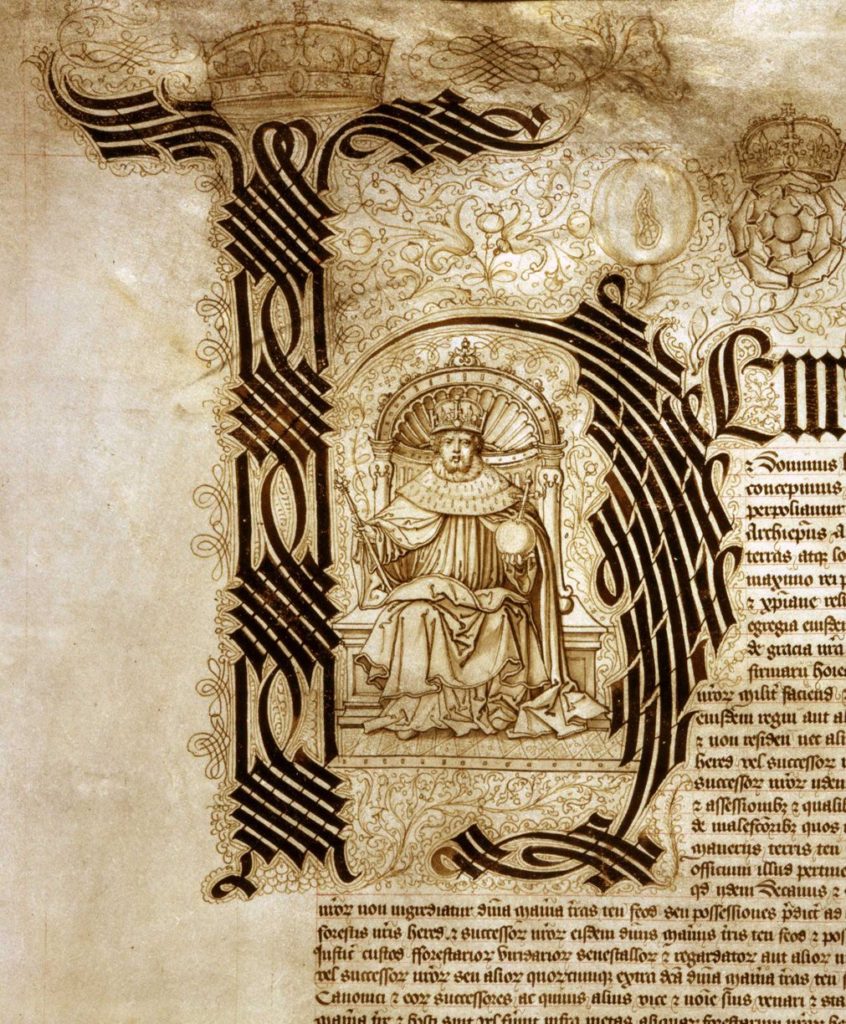
A lot of manuscripts were used to stand in for the king. So, if a law was being passed and Henry couldn’t be there, then this very important manuscript was meant to represent him in person. Therefore, you often had a portrait of the king there. Someone once said, ‘with courage and a pair of scissors you could make the first portrait miniature from a manuscript!’ They did that – these portraits got taken out from manuscripts and became portrait miniatures in their own right.
Sarah:
Do we know when the earliest portrait miniature came about? When did they first come into fashion?
Emma:
It very much depends on whether you’re English or French at this point! Both nations claim the earliest miniatures in the 1520s. So, you have the portraits of Henry VIII from the 1520s and those of Francis I as well. They’re both painted by Netherlandish artists – Lucas Horenbout in England, and in France, they had Jean Clouet. So again, you’ve got that Netherlandish connection with these very early miniatures.
Sarah:
You’ve explained why they became popular. They were tokens of love and affection, I guess?
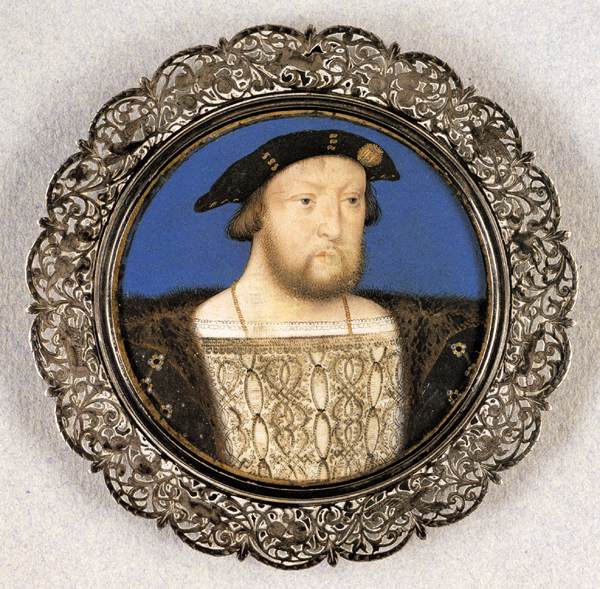
Emma:
Yes, absolutely. Although, at the very early stages, they have a diplomatic role as well. Henry was able to send miniatures to France, and Francis was able to send miniatures of himself to Henry. It’s quite interesting that in these very, very early miniatures of Henry VIII from the 1520’s, he doesn’t have a beard. Then he very quickly grows one. Historians have assumed that he might have seen a portrait miniature of Francis with a beard and decided to grow one himself – in a sort of beard-off! So, in short, it was a way of keeping in touch with other monarchs, with other nations. That’s how it starts.
Sarah:
What about the techniques used? You only have to look at a beautifully created miniature from one of the masters to be absolutely wowed and amazed by the talent, the accuracy and the precision of the brushstrokes. So, from a technical point of view, what can you tell us about how they differed from the larger oil paintings?
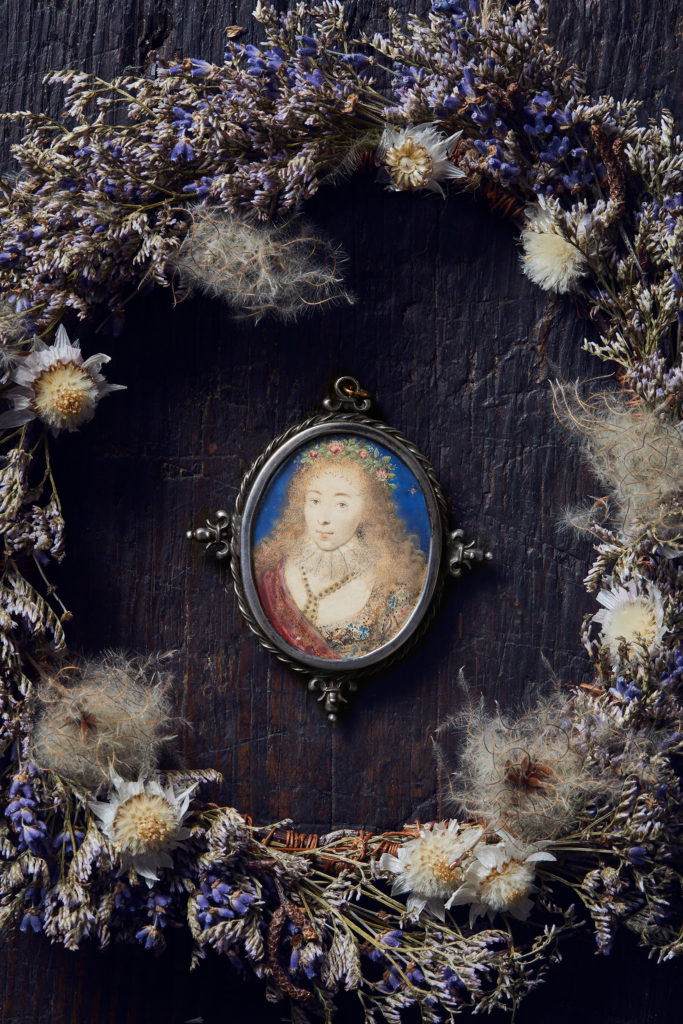
Emma:
They’re very, very different. Just like their origins, there are techniques specific to miniatures and use of the medium is also very different from that used in painting oil paintings of this period. Miniatures are painted on vellum, just like illuminated manuscripts. But illuminated manuscripts are much larger and it doesn’t matter that the pages are a little bit floppy. However, with portrait miniatures, because they’re so much smaller, they were supported on a piece of card.
Initially, the artist would have to glue and rub-down the vellum on to a piece of card. Usually, this is a commercial playing card, which was the cheapest but best quality card available at the time. In Tudor England, playing cards were plain on one side and had the suits on the other side. So, I often feel there’s a little joke; certainly, for lovers, you get hearts, for the queen, a queen or you could even get the king for a king, etc.! So, when you turn over a portrait miniature, if it comes out of its frame, then you have this playing card side.
Sarah:
That’s amazing! I had no idea about that. You are saying that you can still see Tudor playing cards on the back of Tudor miniatures?
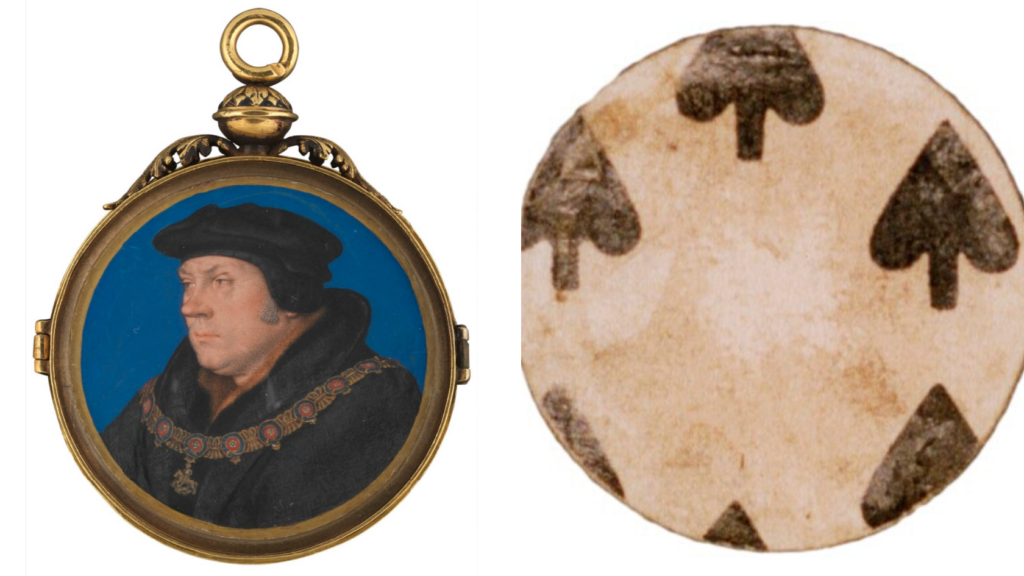
Emma:
Yes. It’s just wonderful because it helps anchor these portraits as private, domestic objects. It’s a link with something that people were doing daily; it’s a daily object, like a playing card, turned into this incredible work of art.
Then, once they’d smoothed the vellum down, the artist had to mix their paints. The watercolour paints that were used were kept in mussel shells because they were the perfect size for a very small amount of paint. Mussels, as you know, were widely eaten in Tudor England and not quite the delicacy they are now.
There are also some misconceptions about the brushes used. I often hear people saying that they used a single hairbrush, but in fact, that wouldn’t hold any paint. So, the artist would use quite a fat brush, which came down to a single point, or a very fine point, in order to paint. They were usually made of squirrel hair which is very fine hair.
Also, they would use a tooth to burnish the paints. It would be mounted on a sort of stick to burnish some of the paint, some of the gold and also to keep the vellum flattened onto the playing card.
Sarah:
What do you mean by ‘burnish’, Emma?
Emma:
Well, they rub out any bumps in the paint. Because they were grinding the paint themselves, it was often relatively rough. But the tooth was mainly used to make sure that the vellum was laying completely flat on the playing card once it was laid down.
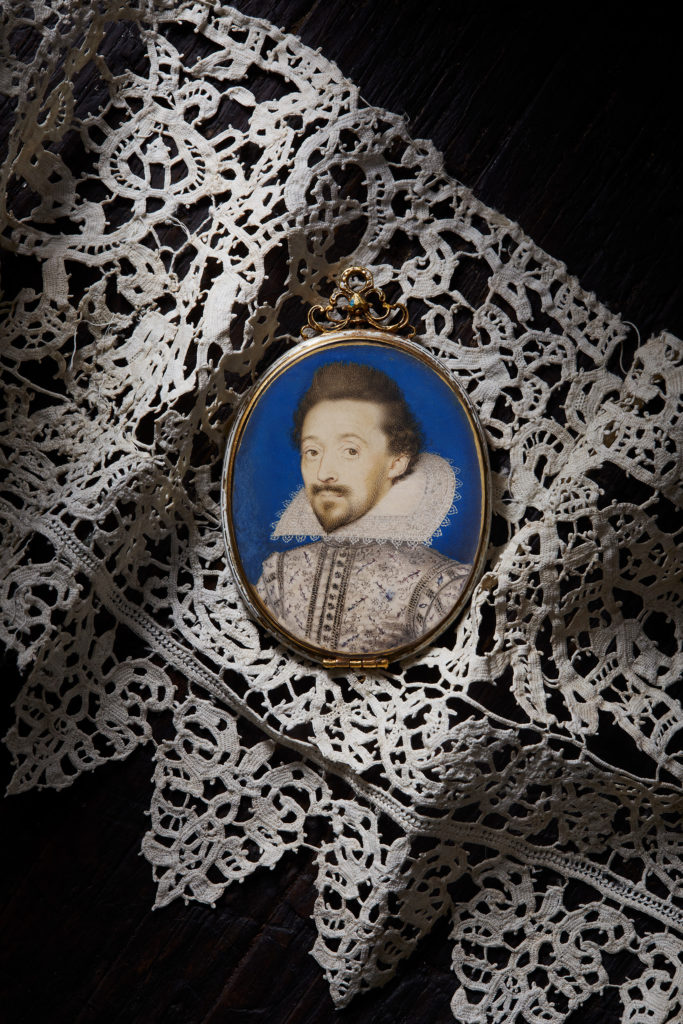
Sarah:
Very interesting! I imagine that these weren’t inexpensive items to commission and were the provenance of members of the court, at least initially?
Emma:
Yes. Certainly, in the beginning, they were very much confined to the court and they were rarefied things. There was a very small number of artists who could create these delicate portraits, using the very specific techniques I have just described.
Sarah:
Obviously, the folk commissioning these were aristocrats, they were wealthy people. Do we have any idea of the cost of commissioning a miniature, say in comparison to a full-sized oil painting?
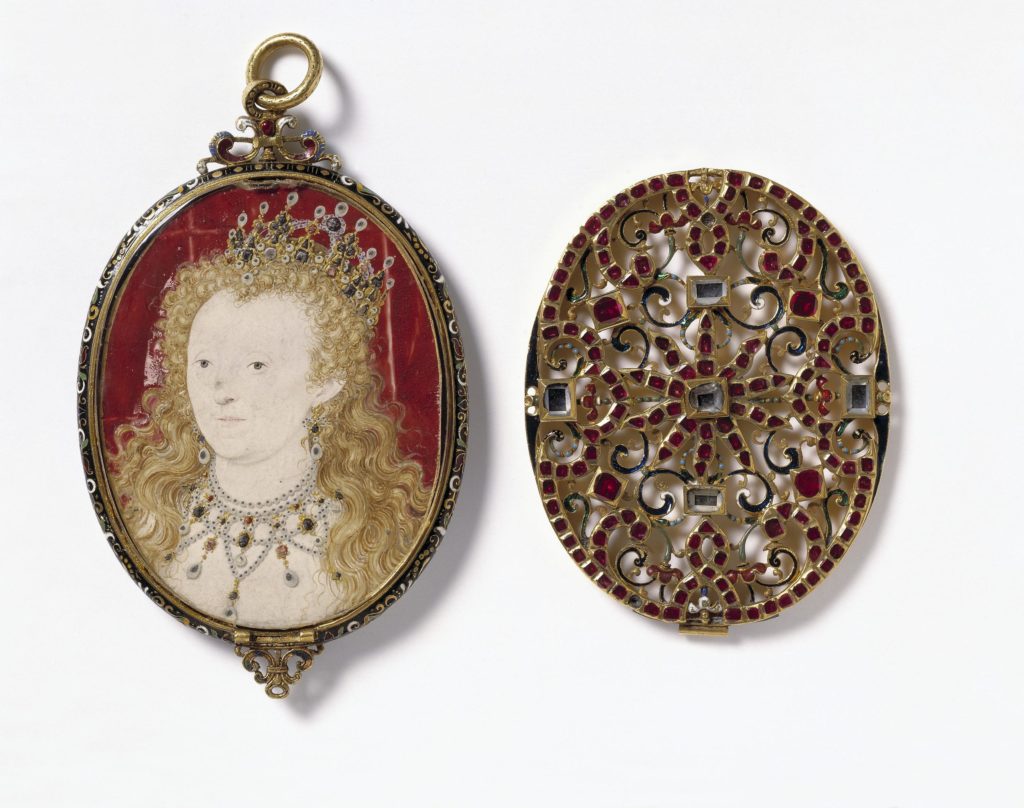
Emma:
There’s not a huge amount of information available about how much miniatures cost. I’ve read somewhere that they cost around £500 in today’s money, but to me, that seems quite low. And, of course, the other thing about portrait miniatures is that they can’t just be left on a playing card; they all have to be framed. And it was often that framing which cost an awful lot of money because the frames and cases were often jewelled and enamelled.
Sarah:
Yes. Good point, I didn’t think about the setting of them, but yes I can well imagine! Now, one of the other things that has always interested me about miniatures are the artists. You did mention that Holbein produced miniatures but, on the whole, it seems to me that the people that were producing the large-scale oil paintings were different people from those who were producing, or who were seen to excel in painting, miniatures. Can you talk to us a little bit about some of the key artists, who were renowned for painting miniatures during the Tudor era?
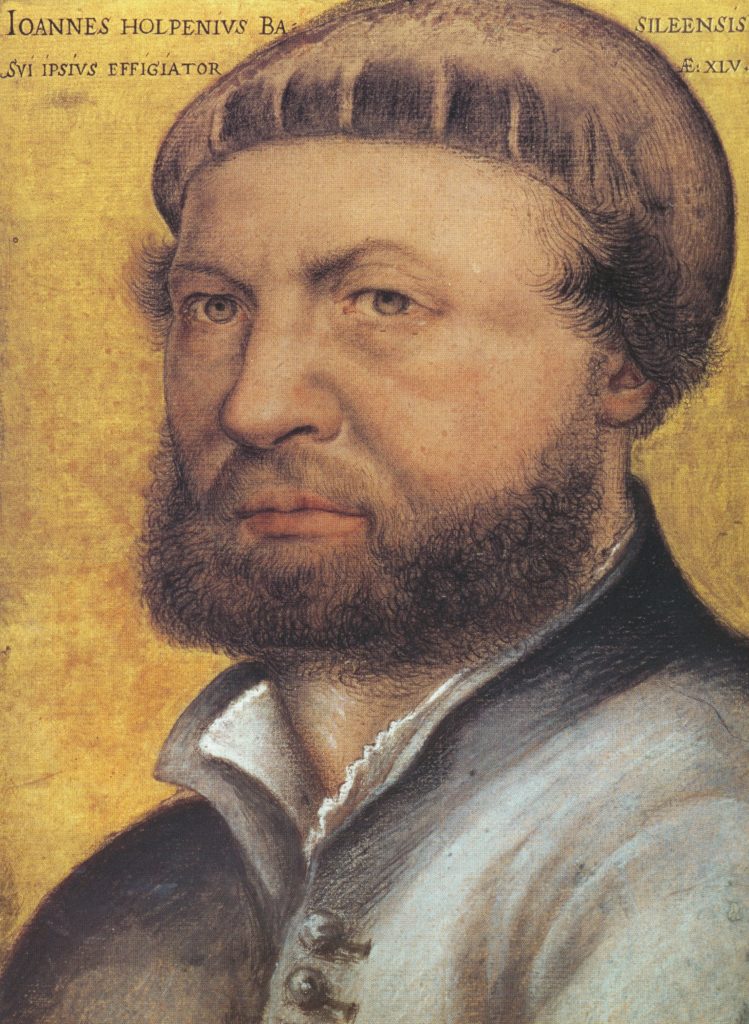
Emma:
Yes, absolutely! I think your point that they’re very different to the oil painters is very important and valid. From the beginning miniaturists or limners, tried to differentiate themselves from oil painters, who were almost thought of as painter/decorators. Nicholas Hilliard, who is Elizabeth I’s portrait miniaturist, certainly makes that distinction. We’re very lucky because he wrote a treatise on the art of limning and he doesn’t just talk about how he paints miniatures, but he talks about how a portrait miniaturist had to wear silk so as not to shed fibres.
Sarah:
Really, that’s amazing!
Emma:
He defines himself as a gentleman and even warns that only gentlemen should attempt this type of painting. He is making an important social distinction between himself and jobbing oil painters, or perhaps those who he sees as jobbing oil-painters! I think another point about the artists of this period is that they have direct access to not only the monarch but also other high ranking members of the court. One really important aspect of portrait miniatures, which I haven’t touched on yet, is this tradition that you had to have the person sitting in front of you while you painted them. It had to be an ad vivum portrait. I’m not quite sure where this came from, but it’s probably because the miniature is a private image.
When you commissioned a portrait miniature, you really wanted to get a sense of the person you wanted to see in the miniature. So there’s no point having the artist copy another painting, which might not be as accurate; you had to have the person sitting there. When I get excited about miniatures, that’s one aspect that I find so fascinating. In Hilliard’s treatise, he even talks about sitting with Elizabeth I under a tree in a garden, and how she said to him, ‘Look, I don’t want too much shadow on my face’. He has left behind a wonderful record of the conversation between artist and monarch.
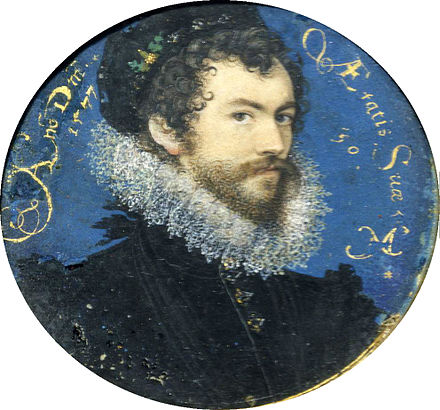
Emma:
Another artist who I find fascinating was a gentlewoman in the retinue of Elizabeth I. She was called Levina Teerlinc. She was born, we think, around 1510 or 1520, and she was the daughter of a Flemish manuscript illuminator. She was trained by her father at home. She worked for three monarchs – for Henry VIII, for Mary I and then for Elizabeth.
There’s an awful lot of documentation which refers to her and to her presenting these monarchs with limnings as New Year’s Day gifts. Frustratingly, we haven’t really been able to fit that documentation with any specific miniatures. However, there’s a group of miniatures which all have the same technical and aesthetic characteristics and which we think are probably by her. Sadly, though, there’s no direct documentation which links the two.
We know, though, that she painted miniatures and we know she was paid an awful lot of money to do so. In fact, she was paid more than Holbein; around £40 per annum. She’s become a bit of a poster girl for feminist art historians!
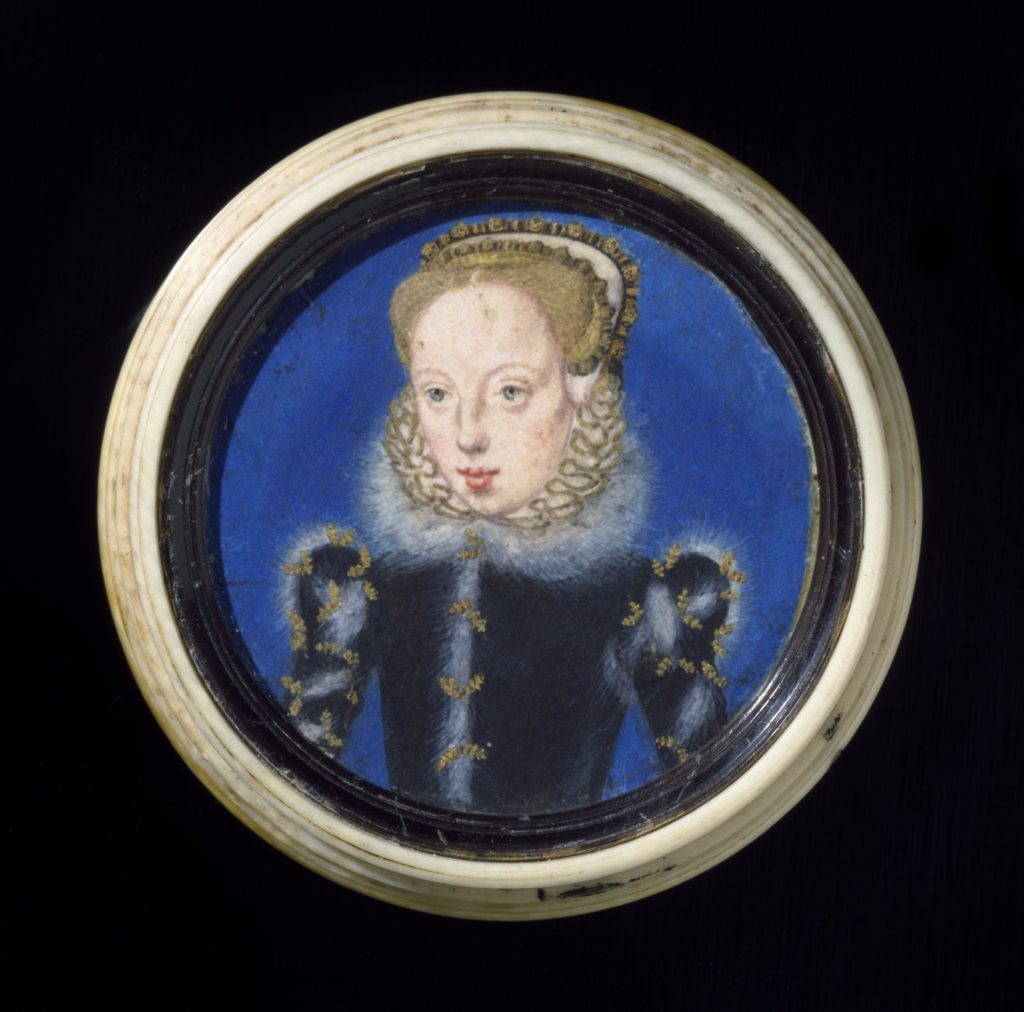
Another thing to say here is that there’s something about painting miniatures which makes it an acceptable occupation for female artists. I think it’s to do with the scale – you don’t need to move a lot in front of a huge canvas and there’s something delicate and confined about the painting of miniatures.
Then there’s Nicolas Hilliard. He starts working for Elizabeth I in the 1570s. What’s really fascinating about someone like him is that he’s the first English artist who is absolutely excelling in terms of a worldwide stage and in this particular art form. Henry VIII, as you’ll know, employed so many artists from abroad. But here we have an Englishman, who is the best artist working at this period.
Interestingly, he trained as a goldsmith. So, one of the really fantastic things about his miniatures is the attention that he paid to jewels. When you get them under a microscope or a magnifying glass, he’s got these little blobs of red resin for rubies. He would then surround them by gold and burnish it. So, he’s recreating jewels in a three dimensional way on the surface of these little miniatures.

Sarah: So, can you give us examples of a couple of your favourite miniatures, Emma?
Emma:
Of course, yes. It is quite a challenge though, deciding which are my favourite miniatures! There are so many wonderful examples, all with their own distinct story. However, one which has always stuck in my mind, and probably takes me back to my 10-year-old self, is the Hans Holbein portrait of Anne of Cleves. This is in the national collection in the Victoria and Albert Museum in London.
This miniature is a fantastically beautiful, intricate and exciting portrait to look at. Furthermore, for its few inches, it changed the course of history! In 1539, Holbein is sent to Kleve to paint Anne and her sister, Amelia, as a possible match for Henry VIII. Henry trusts Holbein to bring him back an honest portrait of his possible future queen. It’s a huge weight on Holbein’s shoulders. But, Holbein has been really, really clever here.

We know what Anne of Cleves looked like from other portraits, but in this miniature, he’s painted her absolutely face-on to the viewer. Now, she had a rather unfortunately large nose, but the painting flattens it. She’s wearing a wonderful headdress, which also slims down her face. And then he’s shown her rather modestly in this high necked, but a very expensively jewelled, gown; just to remind Henry of the riches that might come with this match. Anne also has these rather sleepy eyes, which I think Holbein might have thought Henry would find alluring but, in fact, she was just rather gentle and docile.
Of course, Holbein paints the portrait in miniature because, being watercolour, it would have dried incredibly quickly. Plus, it’s very easy to transport back to England. So, again, it’s a really exciting object because we think that on the basis of this portrait miniature, Henry agreed to marry Anne of Cleves, which we all know was a disaster. But you’ve got a piece of painted vellum here that changed the course of history. I just find that exciting!
Sarah:
Any others you’d like to tell us about?
Emma:
There’s one other, which is completely different. This is another miniature in the Victoria and Albert Museum, also by Nicholas Hilliard. As with so many miniatures, it’s of an unknown man. Unfortunately, there’s nowhere to write on miniatures who the sitters were. Thus, they often lose their identity.
Anyway, he’s standing in a shirt. He doesn’t have a doublet over, so it’s just his undershirt which, for these times, is like being shown in your boxer shorts! His shirt is open almost to his belly button and out from underneath his shirt, he’s pulled a locket on a chain which, we assume, has got a portrait miniature of the woman he loves inside. And then the entire background behind him is gold flames (which have been burnished). Therefore, when you turn this miniature in the light, the flames flicker.
Sarah:
Oh, wonderful!
Emma:
He’s got an earring in one ear and that lovely Elizabethan slightly long, ruffled hair, spiked up at the front. He’s very, very handsome! There’s just really one word for this miniature, and that’s sexy. It’s incredibly sexy. There is absolutely no mistaking the message that the receiver of this miniature would have received. That is that the flames of love are burning for you and I’m totally, passionately in love with you. It’s just a very, very exciting glimpse into the private life of an Elizabethan individual. I can imagine whoever received this miniature looking at it for the first time and really feeling their heart pound.
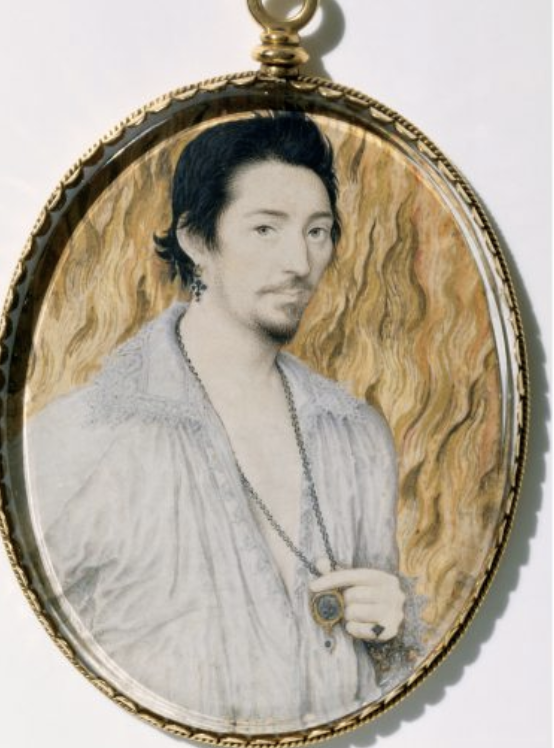
Sarah:
Oh, yes, some lady must have swooned somewhere when she saw it! Now, you say that we can see both of those miniatures for ourselves?
Emma:
They’re both on view at the Victoria and Albert Museum, which has the national collection. However, there are lots of other places where you can see portrait miniatures. Nearly every National Trust house in the country has some because, of course, they’re family objects that often stay with the house.
The National Portrait Gallery and the Holburne Museum in Bath have a fantastic collection, as do most of the big museums around the country. In Scotland, of course, the Scottish National Portrait Gallery also has a fantastic collection. So, these objects are in most good, public museums and art galleries but, unfortunately, because they are quite delicate and susceptible to light damage, they’re often hidden away or behind those horrible leather covers. But, we have to preserve them.
Sarah:
And, therefore, the very last question is what are your top tips for getting the most out of appreciating these objects of art? I think because they’re so small, they’re so easily passed by. Most of us are like magpies drawn to the jewels, you know, heading for some of the bigger, more impressive pieces of artwork.
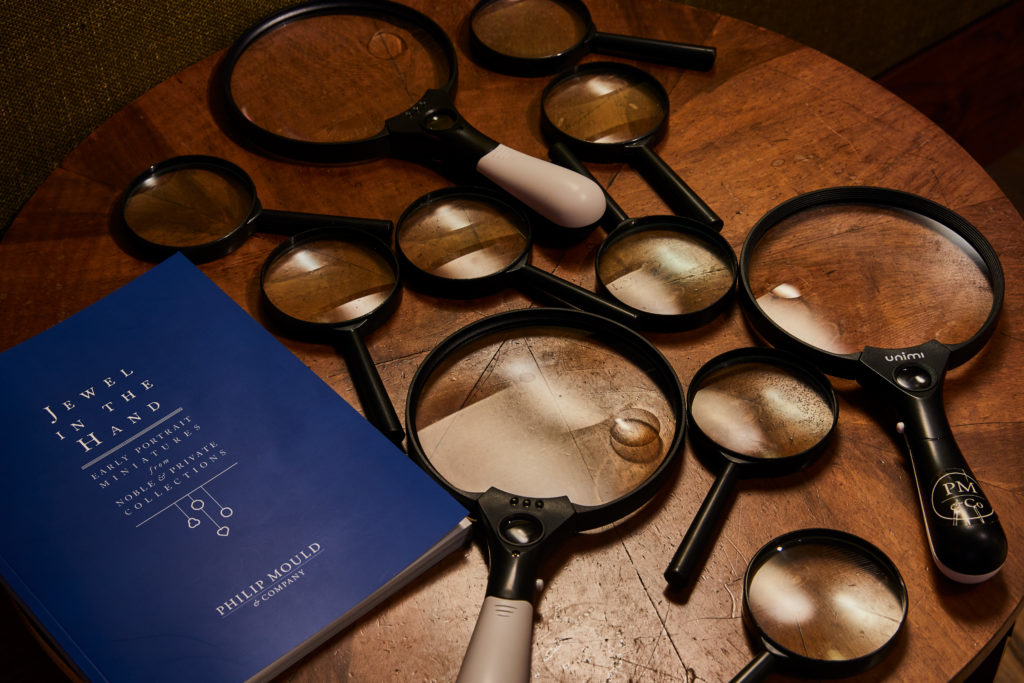
Emma:
Well, I think it’s a real problem for curators. In my job, I advise curators and museums. Sadly, you just can’t give somebody the same experience of holding a portrait miniature in a way that they should be held and looked at. However, you have to try your best to get them as close to the viewer’s eyes as possible. I guess if you’ve got a magnifying glass, or there’s a magnifying glass to hand (which there often is near a collection of miniatures in a museum), use that and just get up close to them because that’s how they would have been viewed originally. It’s very hard when you have a cabinet full of them and they look like measles, all dotted around. So, maybe just focus on one that catches your eye and get as close as possible and really study it.
Sarah:
Well, thank you, Emma! As ever, I have learned so much from our conversation today and I do appreciate that. I’m so looking forward now to getting to the V&A and seeing that collection and maybe trying to find that sexy young man and swooning for myself!
Emma:
I think you will. Thank you so much. It’s been such a pleasure to talk about them.
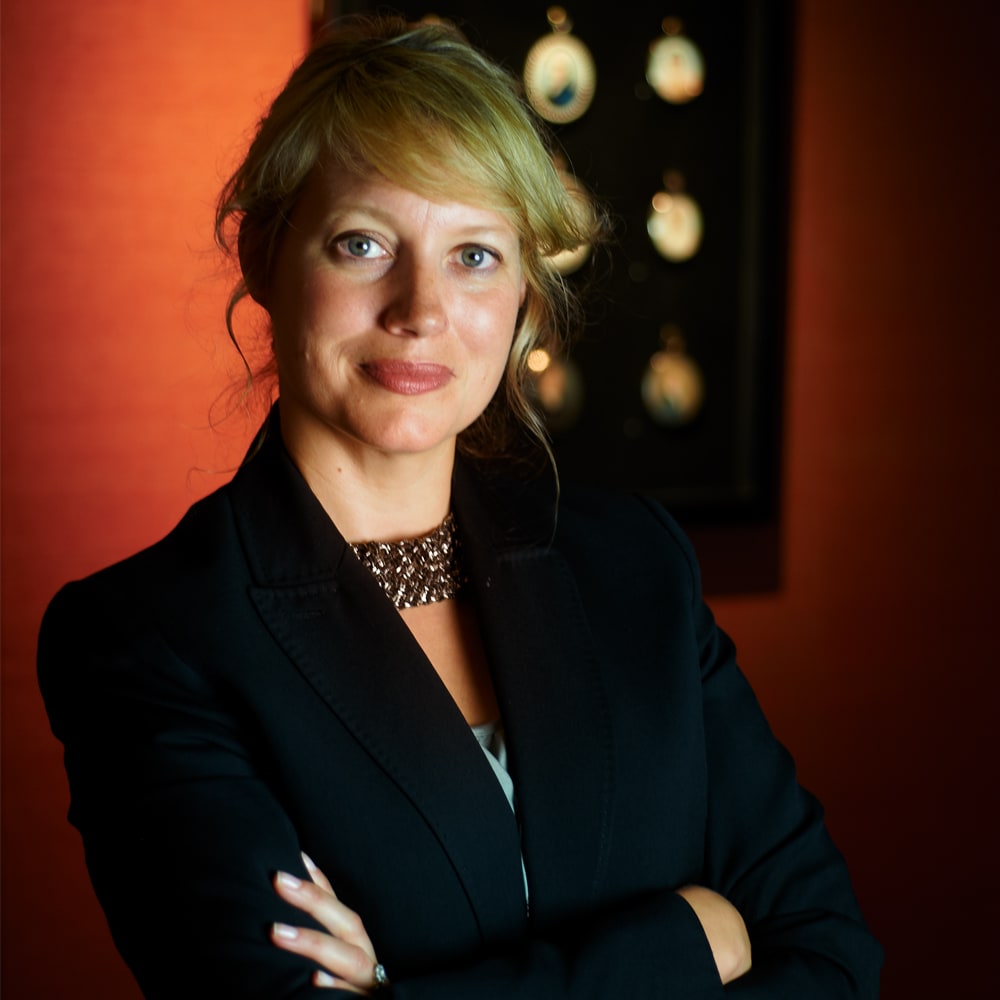
Emma began her career working in the Victoria and Albert Museum whilst completing an MA in Victorian Art and Architecture. She set up the Portrait Miniatures Department at Phillip’s Auctioneers and after the amalgamation of Phillips and Bonhams she became Departmental Director.
Note of Thanks: I am indebted to The Philip Mould Galleries for allowing the use of several of the images shown here.

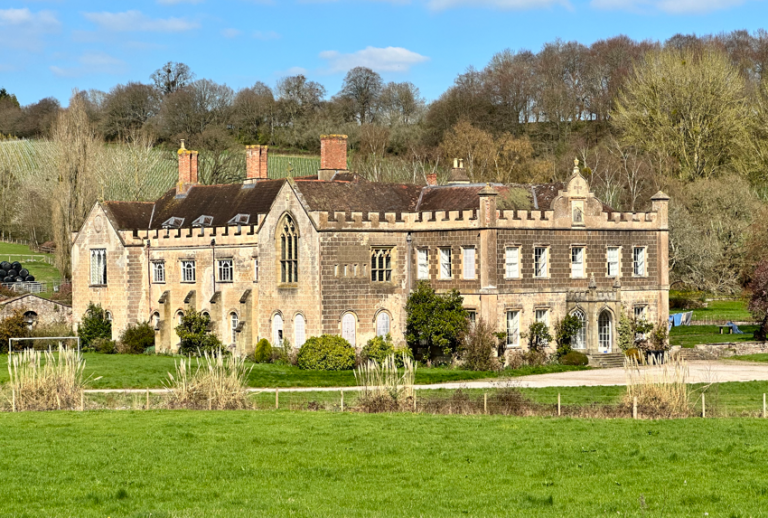
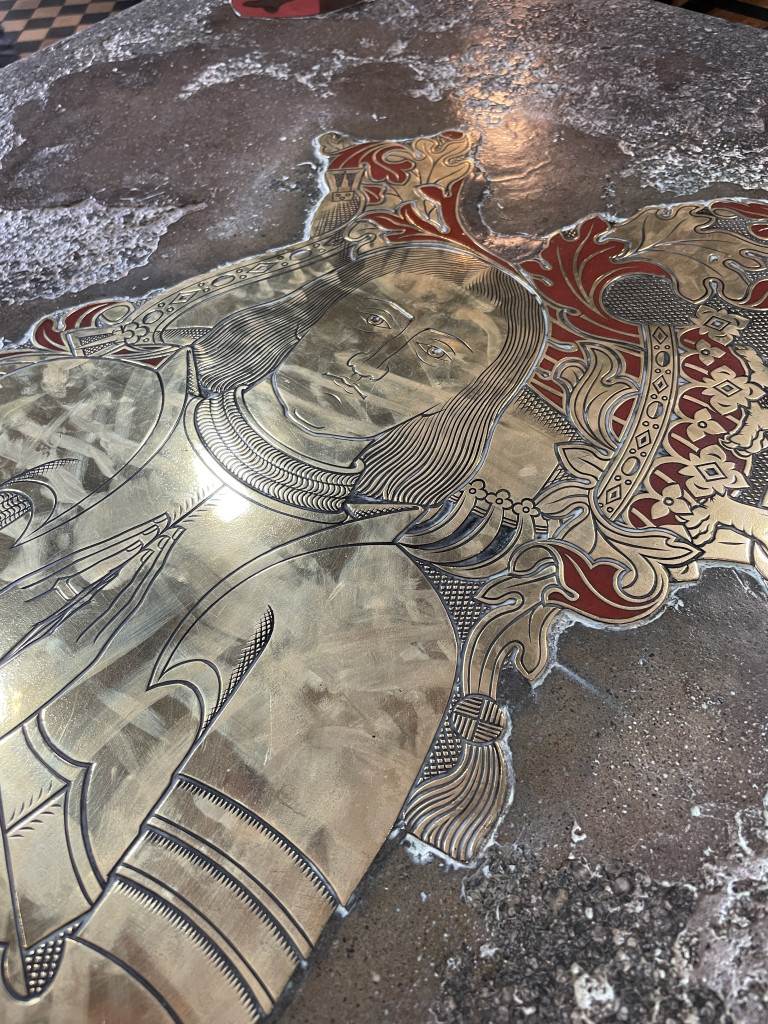
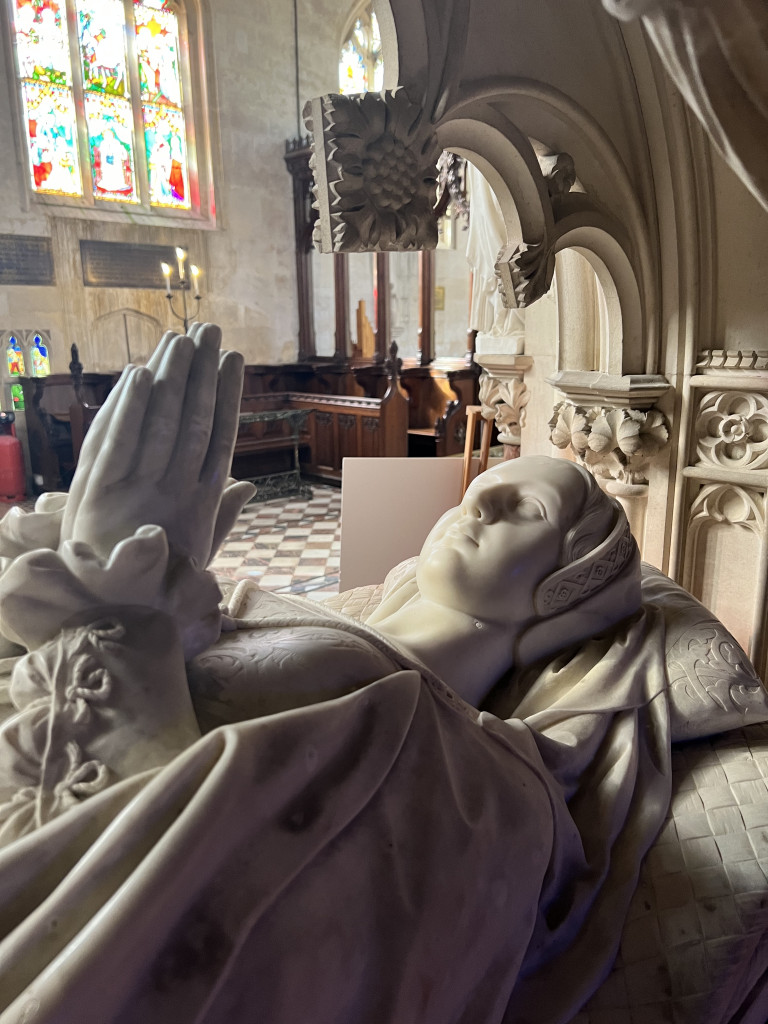
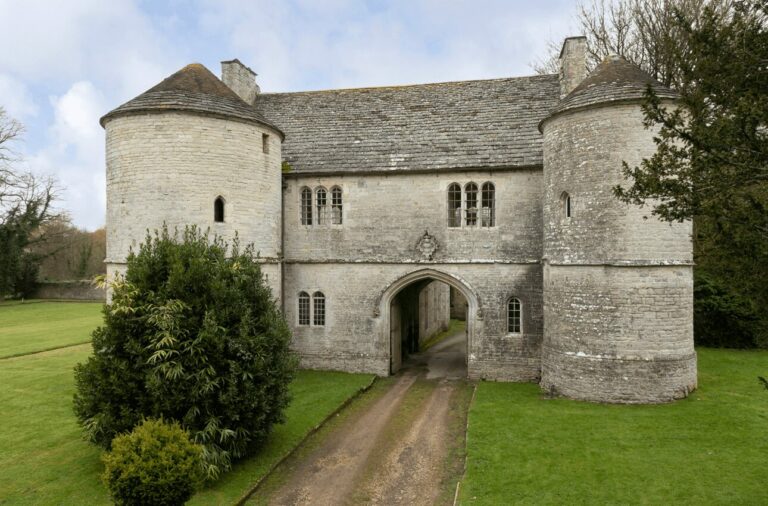

I fell in love with portrait miniatures after seeing them at the V and A. What a fabulous art form! I am far from seeing them again as I live in the US but thanks to the V&A I can see them in books. Another Tudor resource that I love is the catalog from Philip Mould’s exhibition that focused on the identification of several familiar portrait faces. The catalog { https://www.amazon.co.uk/Lost-Faces-Identity-discovery-portraiture/dp/B000OISOJC} is sometimes available on Amazon UK or Abe’s books. So much fun to spend an afternoon “discovering” the identity of the sitter
What a great tip! Love it. Thanks for posting.
I learned to paint miniatures on porcelain years ago. I’d seen some in England but this sheds light on the subject in such a personal way, it gives me renewed excitement to hope for another visit one day. Thank you for sharing your passion. I’m older now and this piece renewed my own sense of wonder for the artform. I’m going to dig out my piece I kept. Thank you.
That is So lovely to hear! I am sure Emma will be delighted too. Good luck in your quest!
Beautiful, Emma and Sarah, thank you so much for such an enlightening interview and the gorgeous images! as a Classicist by trade and a Tudorphile by passion, these lovely miniatures make me think of mythological seal rings from the ancient Greek and Roman world… and doesn’t that sexy Elizabethan man with the smoldering gaze among the burnished flames make you think of Matthew de Claremont in A Discovery of Witches…? 😀
I enjoyed the video on the miniatures. I have on two occasions while I`m in London, gone to the V&A Museum to see the miniature of Hans Holbein’s Anne of Cleves. Both times it was on loan. I do so want to see this one especially because it was so important to Tudor history. Perhaps on my next trip……..
Good luck, next time! Thanks for reading : )
I quite enjoyed this exhibit, thank you very much. I love the miniature of Anne of Cleves.